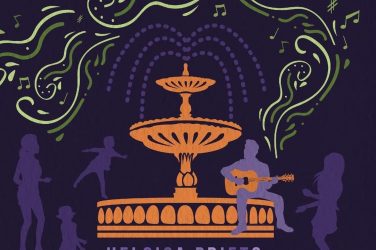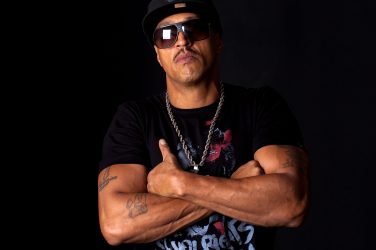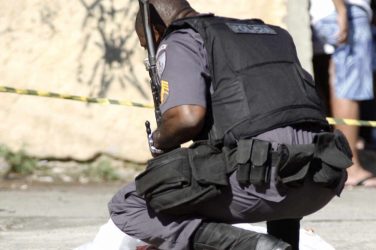Is Brazilian Carnaval becoming an American institution? You can
count on a myriad of Carnaval lovers all around the US to make this
happen before long.
In 1969, the same year that North Americans
stepped on the moon, a group of San Francisco’s Bay
Area Brazilians took a small but historic step of their
own. Opening the doors of a tiny hall in South San
Francisco, they invited the world in. There were no
costumes. The music was taped. By Rio or Bahia standards, the
celebrants, mostly American, were sedate. But it was the first
Brazilian Carnaval Ball on the West Coast.
Twenty seven years later, the event has become one of
party-minded San Francisco’s favorite entertainmments and the
longest running Brazilian Carnaval Ball in the United States. It is
now called the Bay Area Brasilian Club/Friends of Brazil
Carnaval Ball to reflect a progressive shift of leadership a few years ago.
By any name, this one nightful of fun is what finances the
Club’s activities year round. Many of these concentrate on serious
community needs: seminars on immigration, work, drugs,
emergency family funding. Others concentrate on culture: concerts by
Brazilian musical artists like João Bosco and Beth Carvalho, a
film exhibition and San Francisco’s First Children’s Day. But
on Carnaval night, revelers concentrate only on samba,
frevo, marcha, samba reggae and
axé.
Since 1984, the San Francisco Carnaval has been held in
the Galleria, a soaring, multi-tiered building, which adapts
naturally to festivity. Each year at Carnaval, it is embellished with banners, streamers,
serpentines. Last year, twin cardboard cutouts of a two-story
high Carmen Miranda smiled down on the crowd.
This year “The Night of the Masquerade” decorations
will be topped by a 24 by 24 foot Carnaval Mask winking
seductively at the two to three thousand people who are expected to
attend. Included among them is an upscale group from the
Domaine Chandon Club, most of whom, it is likely will be attending
their first authentic Carnaval Ball.
And authentic is the key word. Through the years
traditional Carnaval idols like Elsa Soares and Emilinha Borba have
come up from Rio to join local Brazilian performers. Carnaval
regulars through the years have included Lisa Silva; Aquarela,
directed by Maria Souza; Carlos Aceituno’s Fogo na Roupa; and
Oxumaré, guided by Gilda Maria. On-stage also, for the past 11 years
has been The Brazilian All Star Big Band, under the direction
of Célia Malheiros.
Although most of the Band’s members are
professional performers, there are some whose every day lives are
very different. Among the bespangled entertainers are Marilu,
who details foreign cars; Marisa, a travel agent; and Roberto, one
of the top Portuguese court interpreters in California.
The evening will also include a tribute to Neuza Brown,
a native of Rio, who took a rhythmic step of her own in the
history of Bay Area Carnaval Balls. She was the first
sambista, the first person to bring the fantastic costumes and the fiery spirit of
the escolas de sambas to the Bay Area dance floor.
Carnaval `96’s theme, A Noite dos Mascarados
(The Night of the Masquerades) is one that has been popular among revelers
at Carnaval Balls for hundreds of years, in Italy, France
and Portugal. Both the elegant Carnaval Balls and the raffish,
downright dirty pre-Lenten entrudos of the Portuguese poor
were exported to Brazil and, like so much else in that country, it
was the mixing which made Carnaval different than any other
celebration on earth.
Despite the theme, the masks are optional. One member of the
Club, touched lightly by poetic inspiration, explains:
“Wear a mask or don’t wear one To the Brazilian night of fun!”
While San Francisco celebrants wrestle with that one, Brazilians
and non-Brazilians all over the US are following their own traditions
and preparing their own Carnaval Balls.
New York actually held the first Carnaval Ball in the country at
the Waldorf Astoria Hotel but there have been some years when the event
was skipped. This year, however, there will once again be a Carnaval Ball
at the Waldorf.
Los Angeles will hold the 15th Carnaval Ball sponsored by Samba
e Saudade, at the Hollywood Palladium. Florida
Brasileiros will samba at the Seville Beach Hotel in
Miami Beach, their ninth such celebration. Made-by-Brazilian Carnaval
Balls have also appeared, from time to time, in Chicago, San Diego and even
Arizona.
More and more the spirit of celebration, the excitement of the
upcoming change of seasons and just the desire to have one rare old
time makes the Brazilian Carnaval Ball more popular each year.
Someday, perhaps, it may even challenge the New Orleans
Mardi Gras in popularity as an “all American entertainment
institution.”










